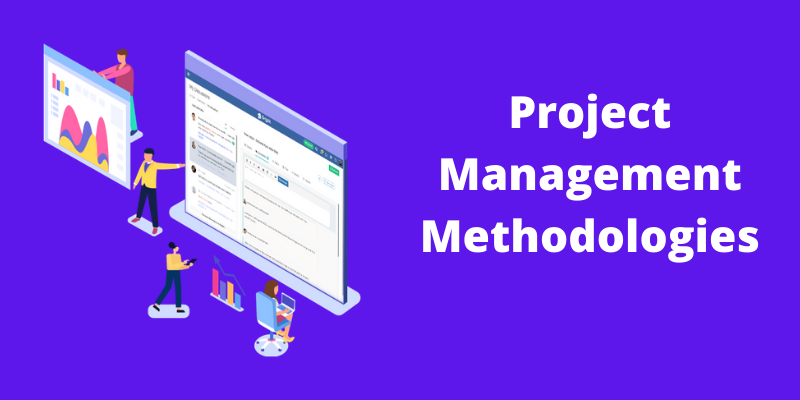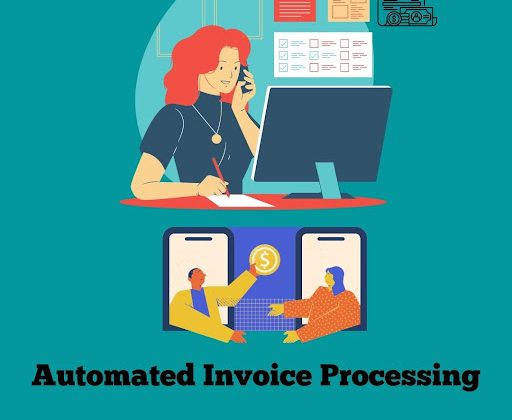Project Management Methodologies
Project management techniques or project management methodologies are not confined to a single industry or business type, it is an essential part of every business, whether small or full-fledged.
A judicious project manager knows how to bring together all the differences of people working on a project and motivate them to achieve the common goal. But beyond that, the project management process and project management methodologies are the best friend of a project manager.
There are several project management techniques that help project managers direct the project development in the correct direction and achieve desirable results while successfully meeting the deadlines and abiding by the requirements.
Let us know what is project management methodology first so that we get in the boat on the same level!
This article has 8 best Project management methodologies:
What are project management methodologies?
A project management methodology is a set of essential guiding principles and processes for managing a project.
Now that we have a definition for what is a project management methodology, let us know some of the best methodologies in the market.
Different types of Project Management Methodologies
Agile
One of the most popular techniques of project management is the agile method. It uses adaptive planning and continual improvement to divide the entire project work into short sprints and enhance the collaboration and self-organization level of a team.
The agile project management technique requires small but highly collaborative teams. It is ideal for software development projects involving recurrent iterations. As a matter of fact, Kanban and Scrum techniques are based on the agile approach.
The Waterfall methodology failed to manage complex projects. So, this was developed as a response to that.
But, if we talk about the approach and ideology, it is the complete opposite of the waterfall methodology.
Let us have a look at some of the advantages and disadvantages of an agile approach for project management.
Advantages:
- Flexibility and freedom: In this methodology, there are no fixed stages or focus on requirements, it gives our sources more freedom to experiment and make some more additional changes.
This makes it particularly best suited for creative projects.
2. Lower risk: Stakeholders are there at every stage in this methodology, they keep giving feedback and changes they require which makes a project very less likely to fail.
Disadvantages:
- No fixed Plan: This approach has no fixed plan, it responds to the changes as they occur which makes resource management and scheduling harder.
- Collaboration-heavy: The lack of a fixed plan makes it essential for all the departments to work together (including sponsors and stakeholders) to deliver results. The feedback-focused approach means that stakeholders should be willing and readily available to deliver feedback.
Let us get an idea of what type of project or organization it best suits for?
As we know that flexibility of the agile approach makes the adaptability for different types of projects easy, it is best suited for the projects:
- When you do not have a fixed end of the project but you do have a general idea of the product
- When quick and timebound changes need to be made in the project
- And instead of planning, collaboration and communication is your key strength
Waterfall
The name of this methodology “Waterfall” is based on performing the various tasks sequentially. This is a better, modified version of the classic approach of project management. It is one of the oldest methodologies.
Originally developed by Dr. Winston Royce in 1970, since then the software industry has adopted it widely.
For this approach, you need to have the crystal clear idea of the demands of the project before you move ahead. As the scope for correction becomes zero after the project is started. It is also heavily requirements-focused, besides being sequential.
Therefore, The next step in the process starts right where the previous one ends.
Monitoring the progress as well as the steps completed is important in the Waterfall project management technique. This is done with the help of Gantt charts( it is a visual view of tasks scheduled overtime). This is so because they offer a clear visual representation of the various tasks, phases, and their dependencies.
Advantages:
- Easy to use: The user-interface of this model is easy to use and understand because stages are divided intuitively and easy to learn even without prior knowledge about this approach.
- Structure: The apparent separation of the stages helps the work in being organized and divided properly. As stated earlier, once done you can not correct it, you have to be perfect in every stage. This need for perfection seldom produces better results.
- Documentation: The waterfall approach is heavily reliant on documentation because of the sharp gathering and understanding of requirements. This makes it easy for the new resources to get in and work on the project when needed.
Disadvantages:
- Higher-risk: The structure of the waterfall has no option of correcting mistakes once you have proceeded, so there is a higher risk of project failure as you have to start from scratch if you have made any mistake.
- Front-heavy: This approach is not flexible enough which makes it a poor choice for complex projects.
Project it best suites for?
Software companies use the waterfall technique mostly.
It best suits for projects like:
- Simple and short projects
- A project with fixed and clear requirements
- Projects that have changing resources that depend on in-depth documentation.
Scrum
Scrum is actually not a fully-featured project management methodology. Instead,
it depicts an approach to Agile management with a target on project teams, short
“sprints” and daily stand-up meetings.
Scrum has its own tactics and processes for dealing with project management. It puts the project team and center of the project in front. A lot of times there is no project manager. The team organizes and manages itself. This makes this approach perfect for highly skilled teams but not so much for others.
Advantages:
Other than the advantages it shares with Agile, it has its own advantages as well.
- Scrum “sprints”: The focus of this scrum is heavily on the number of sprints each of a specific duration of time say 1 week or 1 month. This is where the project team breaks down a project’s core objectives and end-goals into small milestones and tasks then works on them in accomplishing the various tasks across multiple sprints with daily stand-up meetings to keep a regular check on the progress on the project. This makes it easy to manage large and complex projects.
- Fast-paced: The sprint-based approach comes with its 30-day limit and daily stand-up meetings which promotes rapid progress and development.
- Team-focused: The teams manage themselves on their own. Therefore, they have better visibility of the project. It also gives the project managers the freedom to set priorities according to their knowledge.
Disadvantages:
- Scope creep: As there is no fixed end-date nor a project manager for scheduling and budgeting, it has chances of leading scope creep (refers to how a project’s requirements tend to increase over a project lifecycle, e.g. what once started out as a single deliverable becomes five. ).
- Higher-risk: The teams are organizing and managing themselves without a manager, so, there is a higher risk of project failure.
- Lack of flexibility: The Project team’s focus means that any member leaving the team would hamper the growth of the project.
It best suits for:
- It is the best approach for the skilled, motivated and experienced team.
- You can use scrum if you are developing a complex software with an experienced team.
Kanban
The development of Kanban was for a scheduling system for improving manufacturing efficiencies. It is used in lean and JIT (just-in-time) manufacturing processes. In Japanese, Kanban means a billboard. The name of the technique is so as it appears as a series of cards on aboard.
Kanban allows a project team to work efficiently and emphasizes continual delivery. The project management technique encourages continuous collaboration among the project team and lets them improve the workflow by prioritizing tasks, represented by boards.
The project board developed using Kanban helps teams visualize task(s) that must be completed today. This helps in avoiding overburdening the team as it limits the amount of progress of the project and balances the project workflow.
Although Kanban is most suitable for agile projects, it is possible to apply the project management technique to any kind of project.
Advantages:
- Easy to use: Kanban is very simple and easy to understand the methodology.
- Reduction in the costs and wastages of the company: Kanban system improves the flow and management of inventory by directly assisting the company to pursue the company’s existing systems i.e. just in time (JIT) and make to order etc. which reduces carrying or holding costs and makes sure the smoother running of inventories.
Disadvantages:
- Kanban is a tool or a methodology that generally cannot be used independently, especially on large long-duration projects.
- This methodology cannot be applied solely rather it can be merged with other processes and systems of a company like JIT, make to order and scrum, etc. making these systems more visible.
Best suits for?
- Projects with smaller teams.
- Teams who need a flexible approach for delivering a product or service.
- It is also great for productivity purposes.
5. Hybrid
As its name suggests, it is a mix of Agile and waterfall methodologies. It takes the strengths of both the projects and combines them together in a flexible yet structured approach that can be used for different projects.
Its initial focus is to gather and analyze requirements ( a point from the waterfall approach). It takes flexibility from Agile methodology.
By combining properties of Waterfall and Agile, the Hybrid method (sometimes called “Structured Agile”) gives you the best of both worlds.
Advantages:
- Increased flexibility: You can easily make changes in this as long as requirements are not changed.
- More structured: Because of the borrowed initial planning phase from the waterfall methodology, it completes one of the biggest lacking points of agile methodology and that is lack of structure and planning. Therefore, you get the best of both approaches to make sure your projects benefit from both agility and robustness.
Disadvantages:
- Requires compromise: As we are combining two opposite methodologies to make one, compromise is a must.
Best suits for:
- The hybrid project management methodology best suits for the project which requires both: flexibility and structure.
- Medium-sized projects with complexity and fixed budgets.
Critical path method(CPM)
Critical Path Method is an algorithm for planning and scheduling projects. Typically, it is used in pair with the PERT project management technique. Complex projects emphasizing on delivery terms and deadlines are the ideal use-cases for the Critical Path Method.
CPM allows detecting the sequence of tasks for a project as well as defining critical tasks. The task that has the ability to influence the deadlines of an entire project is called a critical task. Such a task demands strict consideration and meticulous control.
The Critical Path Method technique helps in calculating float so that resources can be allocated in a better way. In order to implement CPM, an appropriate project model needs to be developed that:
Lists all the tasks,
Mentions estimated time for completing each of them, and
Names all the dependencies.
Once the above-mentioned information is available, one can calculate the longest path from the planned tasks to their completion. Also, the completion of calculation of the earliest and latest time for which these tasks can be finished without affecting the project schedule.
After the completion of this, it becomes easy to know which tasks are critical tasks and which tasks manage to delay without having an impact on the project timeline. This, ultimately, helps in knowing the quickest possible time for completing the entire project.
Advantages:
- Better Scheduling: It has better scheduling of tasks because of mapping the duration of activities and their interdependencies. If there is A which depends on the completion of task B, this approach will help you in identifying and scheduling that task.
- Prioritization: After mapping and identifying critical and non-critical activities, you can prioritize resources better.
Disadvantages:
- No Flexibility: As this approach requires planning everything at the start if after scheduling you need to make any changes, they become irrelevant.
Best suits for:
- Best suits for independent projects and less suits for dynamic projects like creative projects.
Critical chain project management(CCPM)
Critical Chain project management methodology is an alternative to the critical path method with a focus on resource management. In this methodology, you work from the end-goal, which means you work backward.
First, your team has to recognize the deliverables, then use past experiences to map out the tasks required to complete the project. Also, Your team has to map out the Interdependencies between resources and allocate them accordingly to each task.
CCPM focuses on resource utilization and minimizing lost productivity. It is heavily dependent on “monotasking”, i.e. focusing on the task at hand and avoiding multitasking.
CCPM can be a powerful methodology for resource-strapped project teams.
Advantages:
- Resource-efficient: The complete emphasis on proper resource management makes CCPM one of the most resource-efficient project management methodologies around. Also, the alignment of our modern understanding of the detrimental effects of multitasking is well with monotasking.
- Focused on end-goal: The focus on the end-goal yields better results.
Disadvantages:
- It is not an appropriate approach for multi-project environments.
Best suits for:
- When the resources are confined to only one project.
- Ideal for projects having resource-strapped project teams.
Integrated project management (IPM)
This project management methodology is also called as “integrated project delivery”. Therefore, this method is commonly used by creative industries. It emphasis mainly on two things: sharing and standardization of processes across the organization.
The IPM approach was a response to the increasingly integrated nature of creative campaigns. Organizations don’t just produce a single ad; they integrate the ad with microsites, digital content, etc. Most creative projects are a piece of a larger campaign.
An Integrated project has 6 components, they are:
- Project charter
- Scope of the project
- Project management plan
- Execution of the project
- Monitoring of the project
- Control access
Project managers get better insights into the project and access to the resources.
So, this makes IPM, particularly for Creative agencies.
Advantages:
- Transparency: It improves transparency within the organization and keeps a focus on team members documenting and meeting regularly, which helps keep everyone on track.
- Accountability: It makes the entire project team responsible for the project because of its integrated nature. Accountability improves as no team members work alone.
Disadvantages:
- It requires extensive planning which increases your burden and can lead to delays.
Best suits for:
- It is best for large or bigger agencies that have diverse teams and processes.
- It is best for complex projects which have various departments to integrate and which can have resources from multiple teams.
Frequently asked questions about project management methodologies
What are budget and cost control in project management?
The task of overseeing and managing project expenses so that they do not exceed the budgets as well as preparing for potential financial risks is typically the project manager’s responsibility. Cost control involves managing the budget, planning, and preparing for potential risks. Risks can hamper projects and sometimes even require unexpected expenses. Advance preparation for these setbacks can save your team time and potentially, money.
What are risks to a project and how does project management help mitigate them?
Risk is an unexpected and uninvited problem that can slow down or completely derail a well-going project. There are many different types of risks that can impact a project which depends on the industry, counterparty, technology, etc.
One or more risks can affect anything that is part of the project: including people, processes, technology, and resources. It is important to note that risks are not issues.
So what is risk in project management? Risks are events that might happen, and you may not be able to tell when.
What is a deliverable in project management?
A deliverable can be defined as an element of output within the scope of a project – for example a report or a drawing or a piece of content.
There can be one or numerous deliverables within a single project. Items can also be deliverables if they are supposed to be sent externally to a customer or just to an internal manager.
Either way, it usually means that the client wants the deliverable on a certain date. The meeting of a big deadline or milestones means a deliverable is sent or completed.
Conclusion
Before jumping right into a project, it is important to plan before and choose a methodology that suits the project requirements and goals.
The described project management methodologies apply to a wide range of requirements and will thus, make it easier for you to make the call.
Although almost all projects have uncertainty, while some have negligible other have significant, making the right project management methodology will ensure successful delivery of the project while abiding by the deadlines, set expenditure limit, and requirements.
So, If this article helps you in delivering the project successfully, do not forget to share it with your friends and colleagues.
Also, help me in writing more helpful articles like these by reviewing it.







